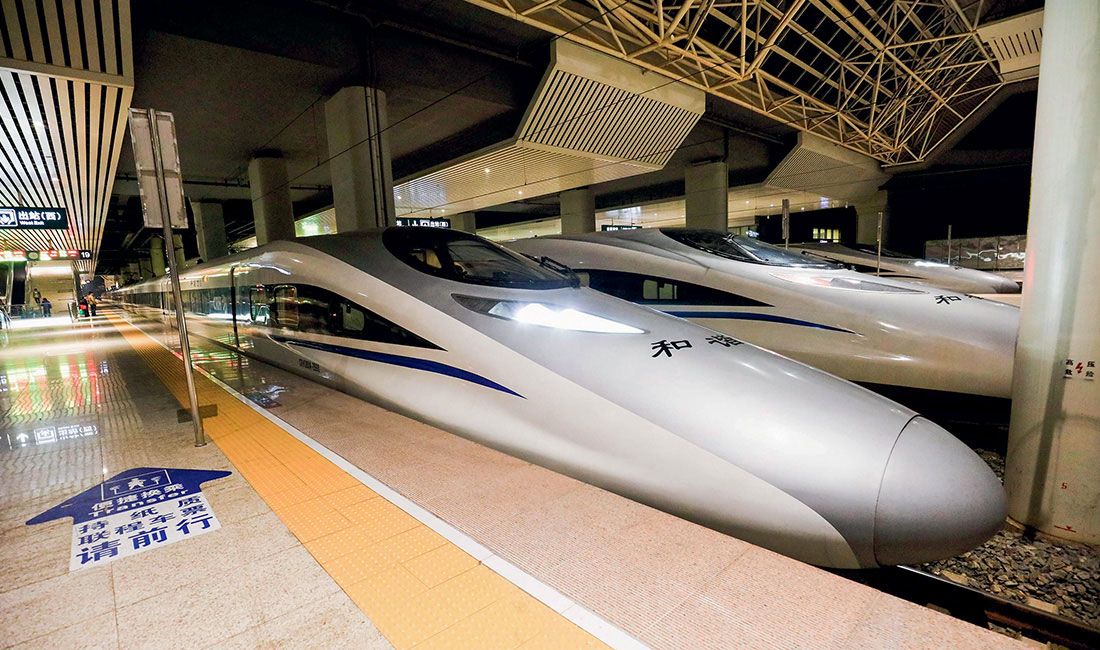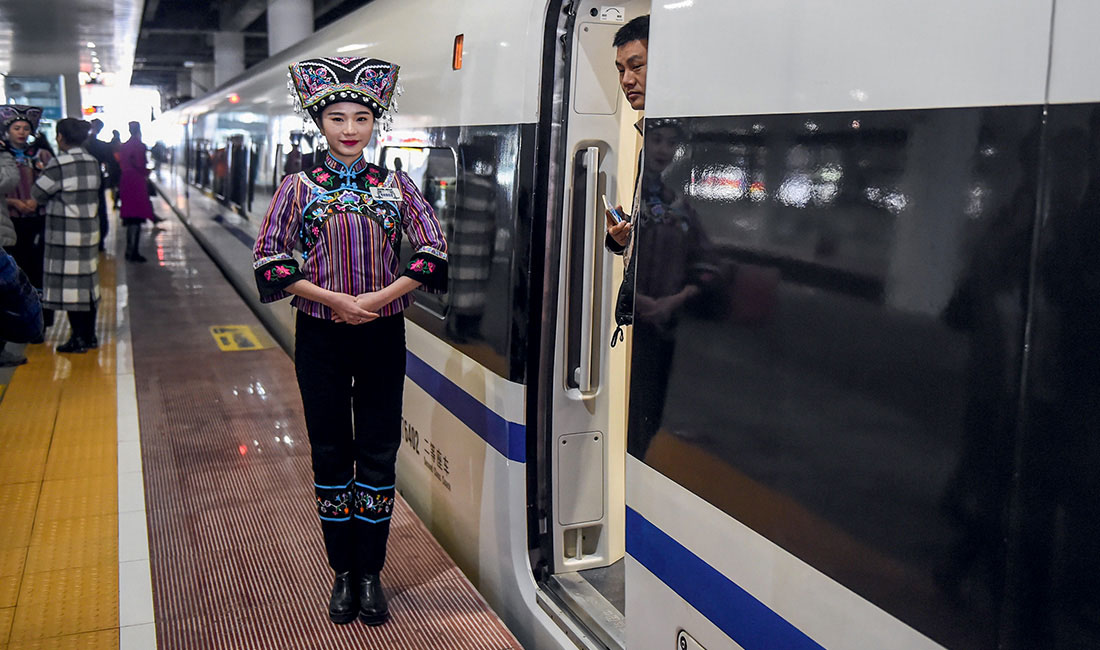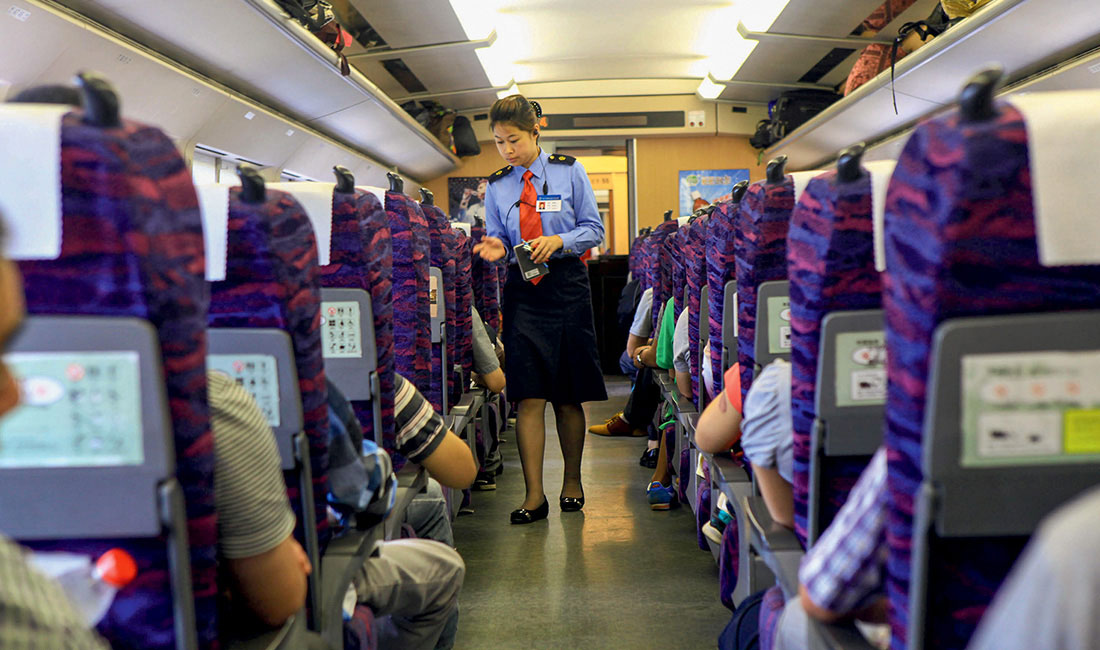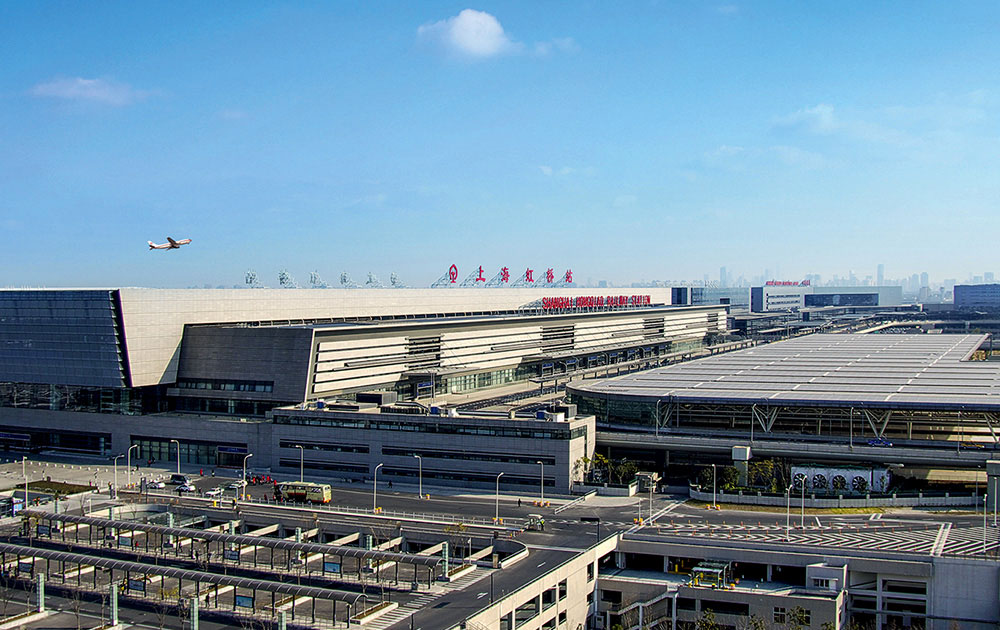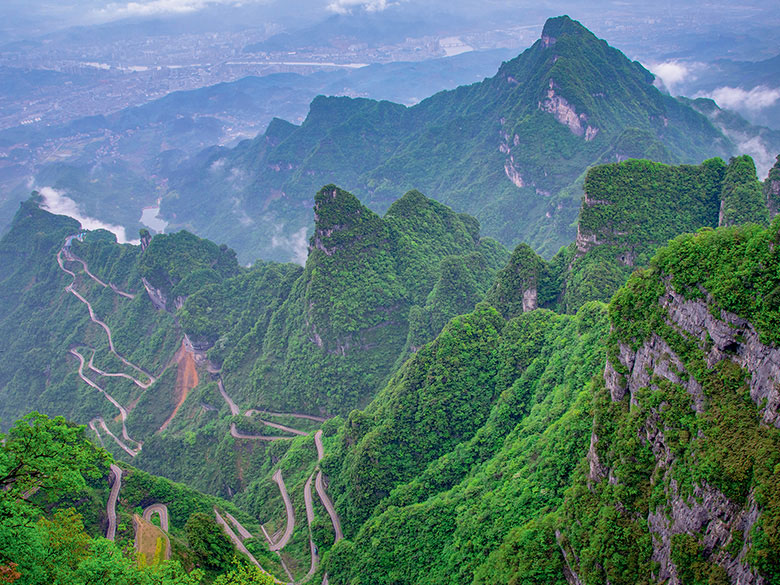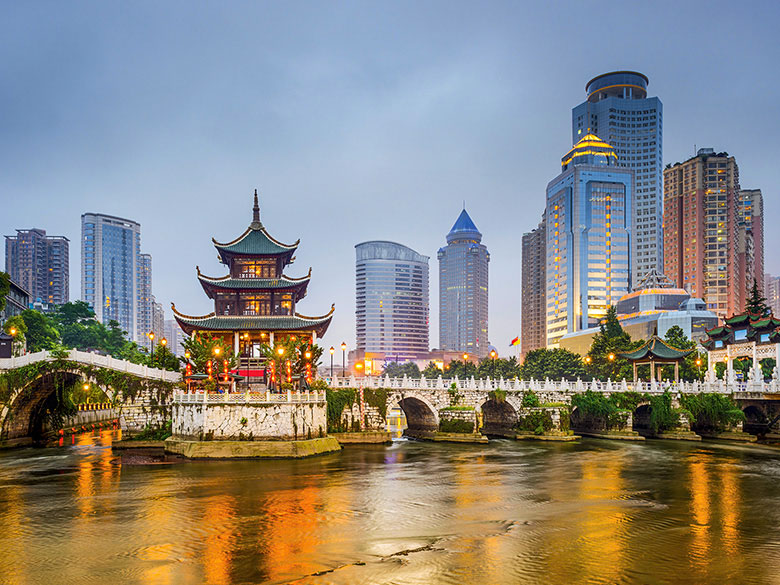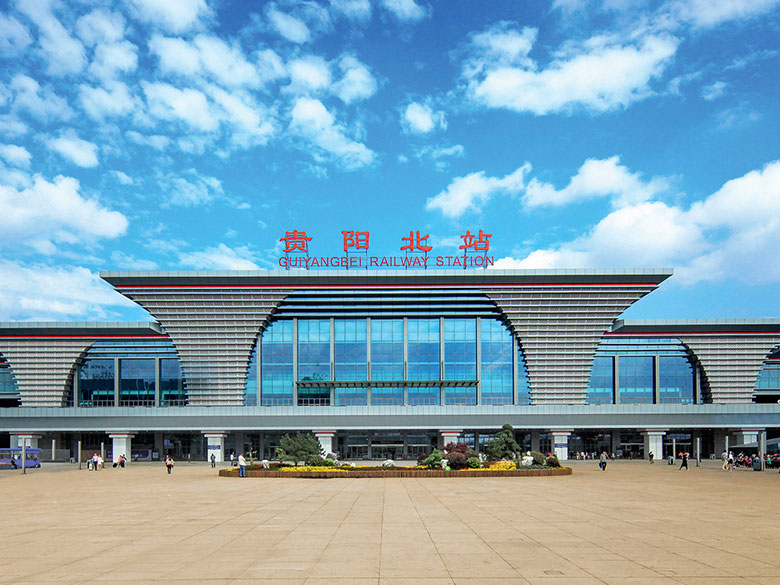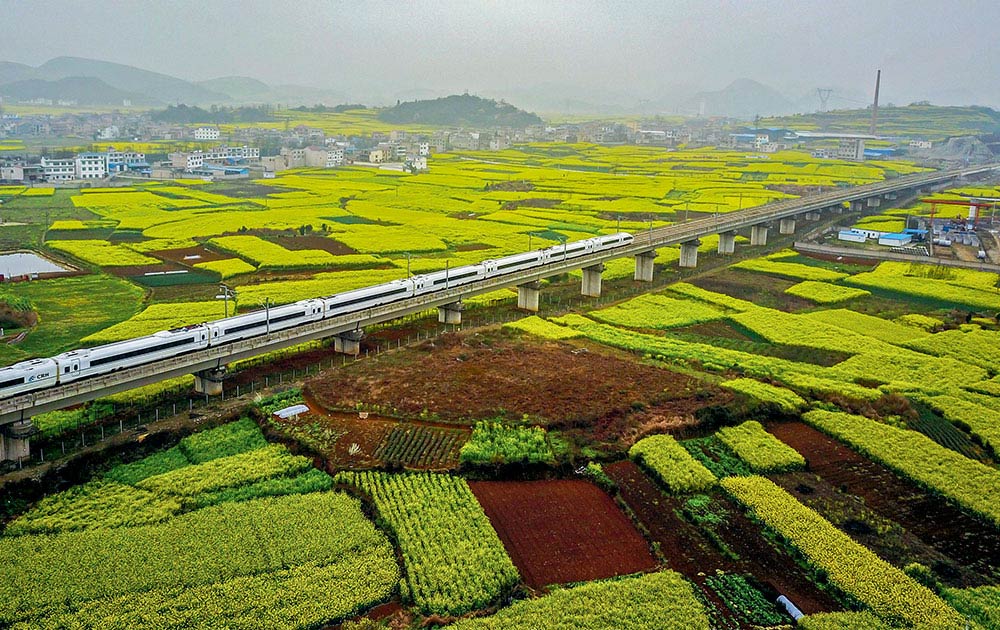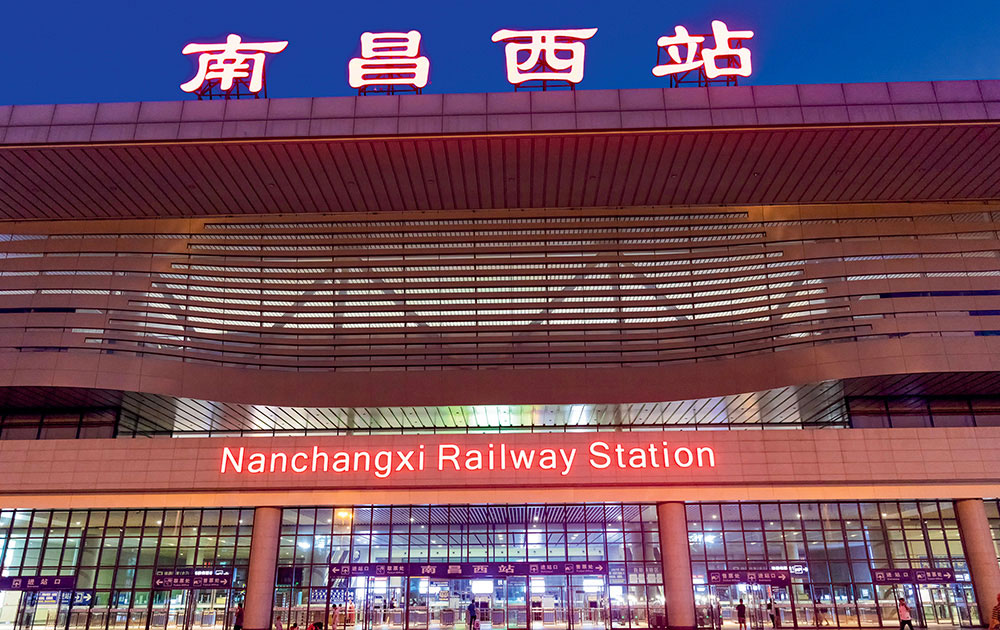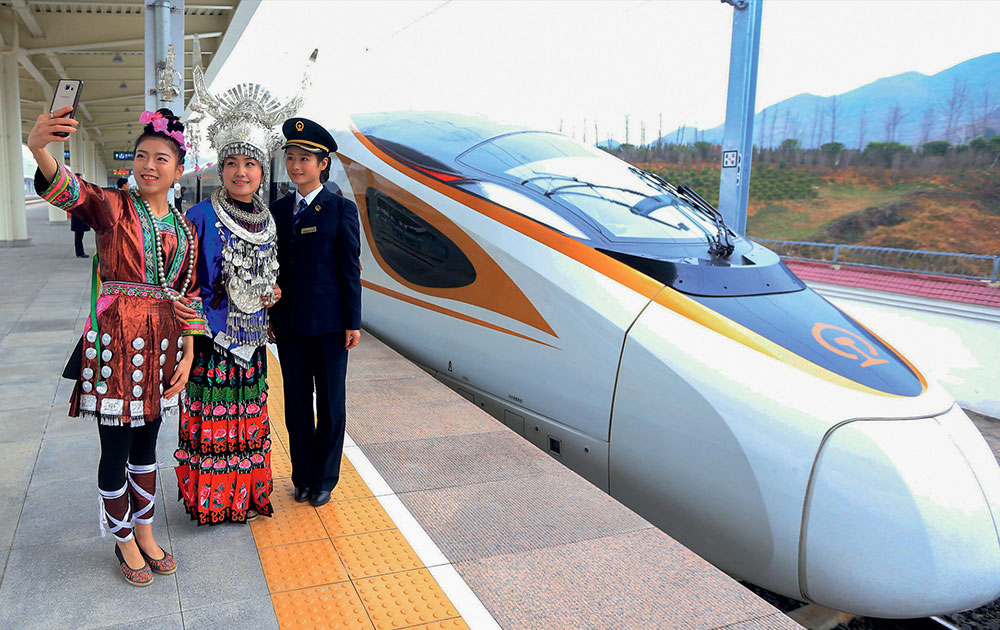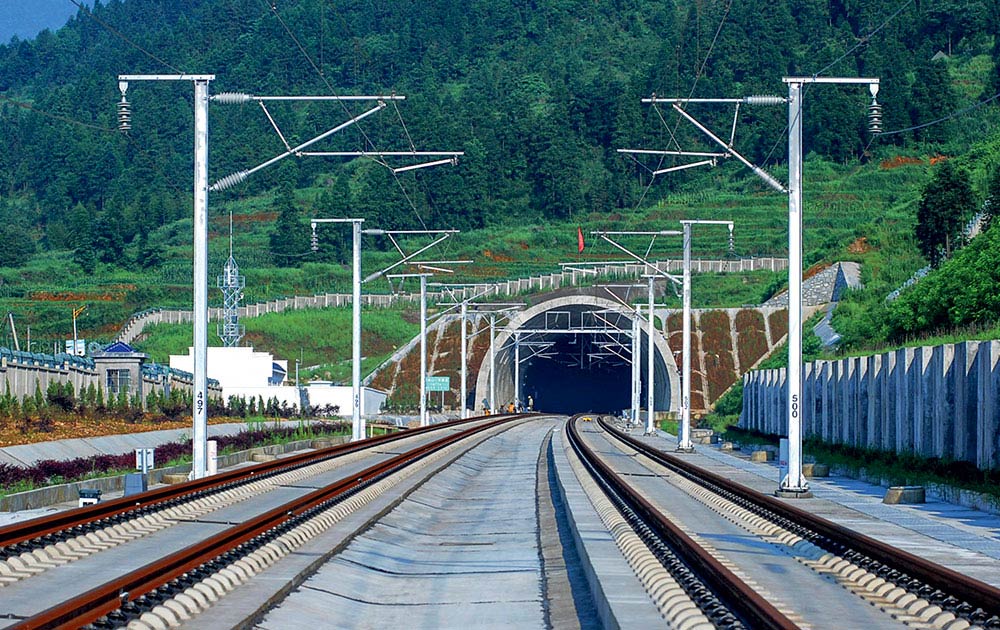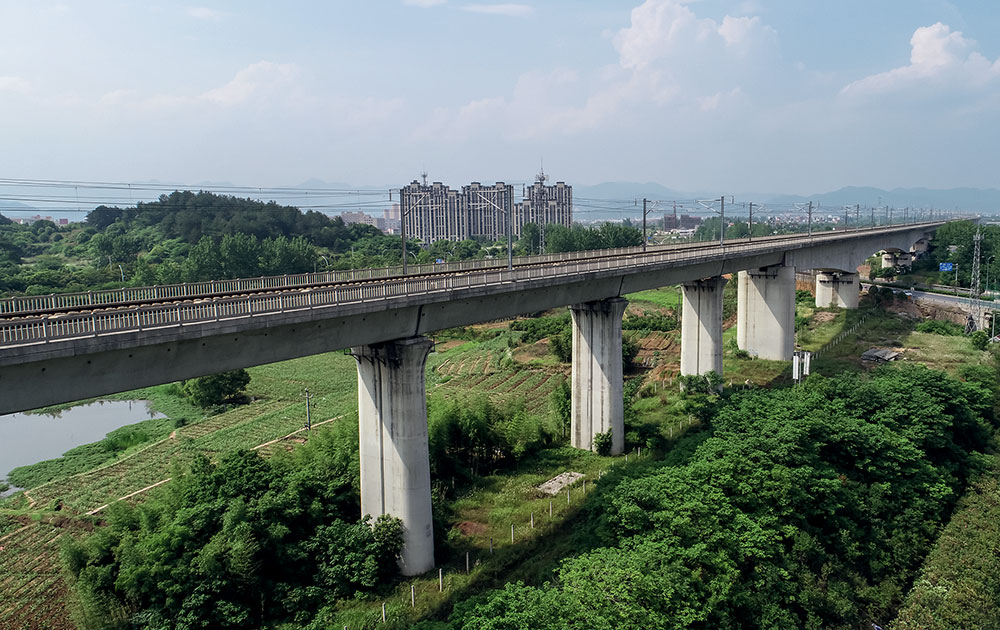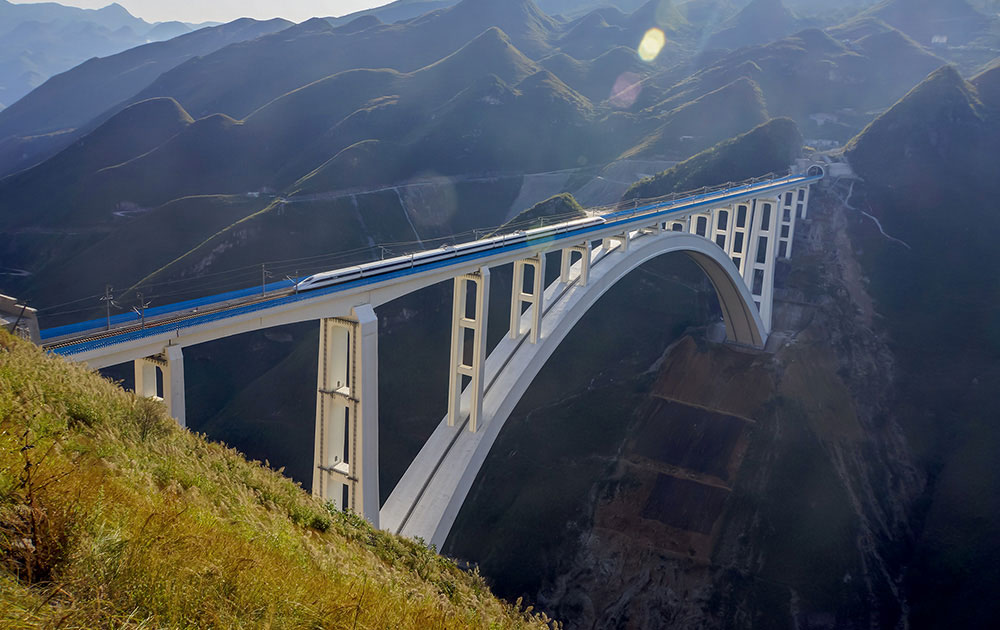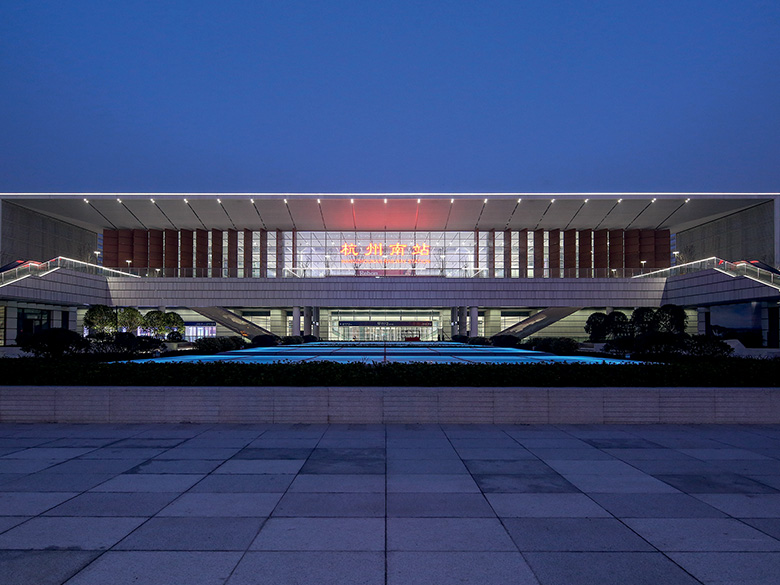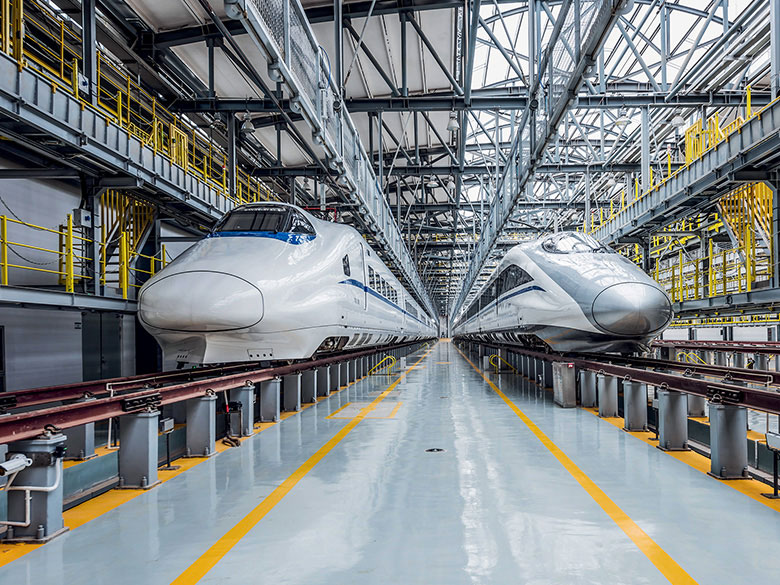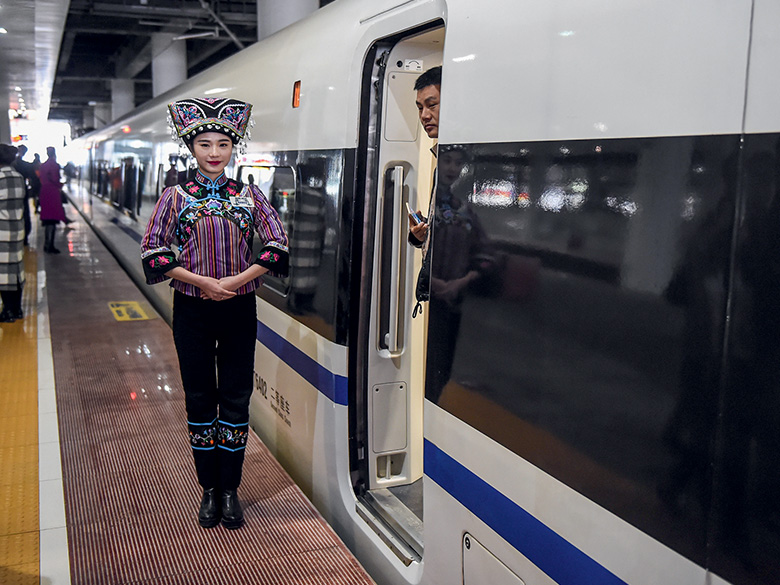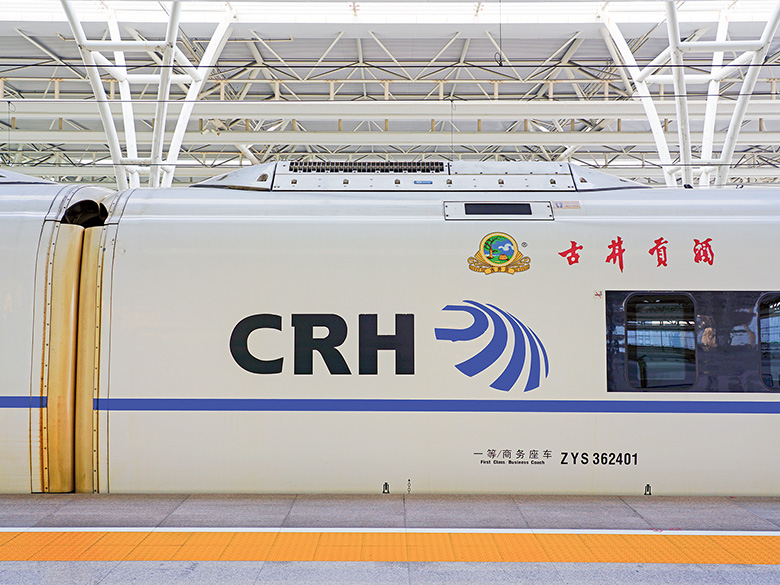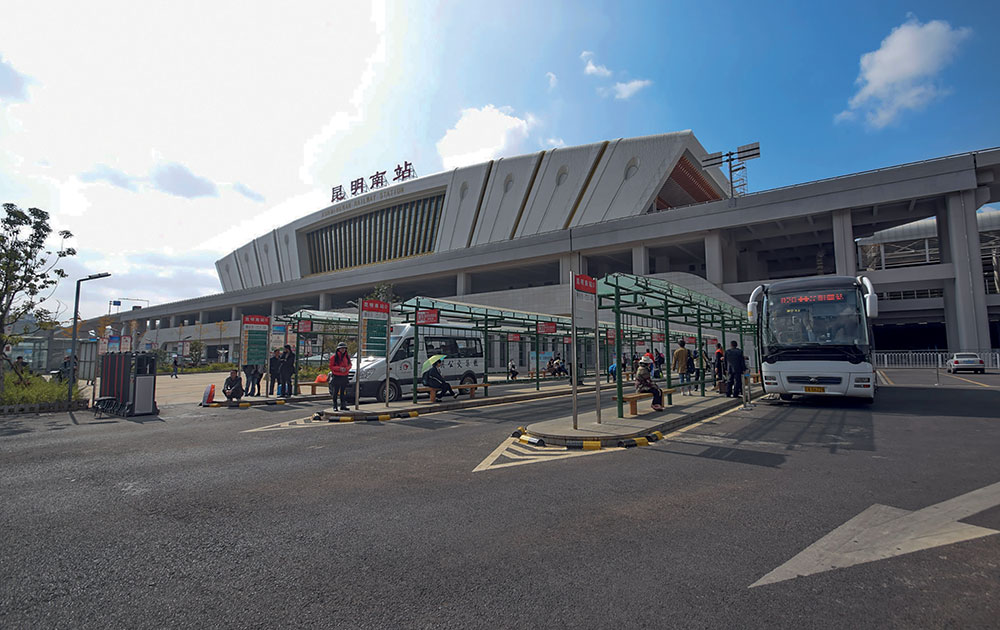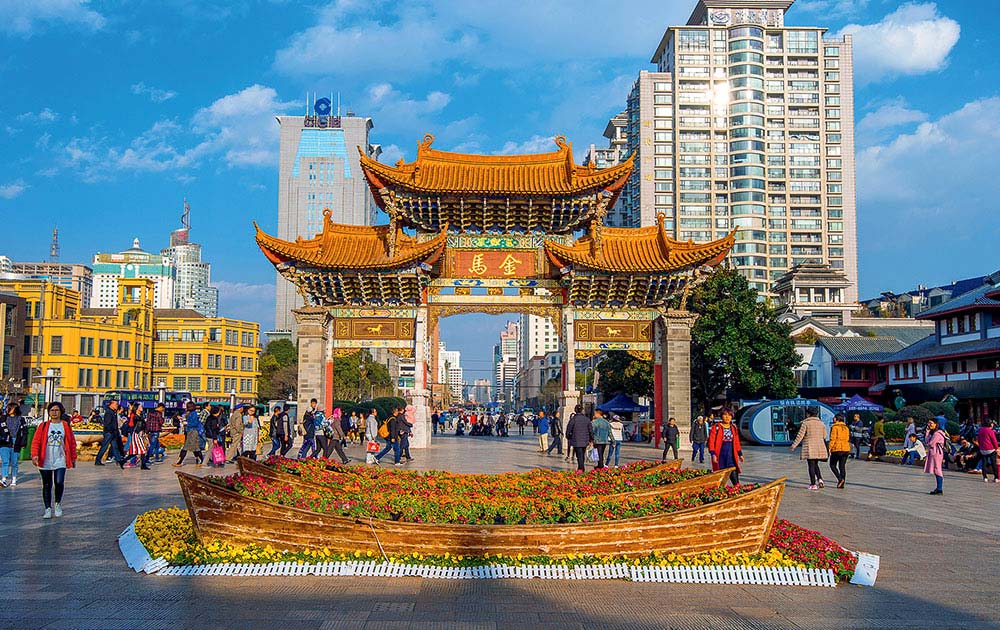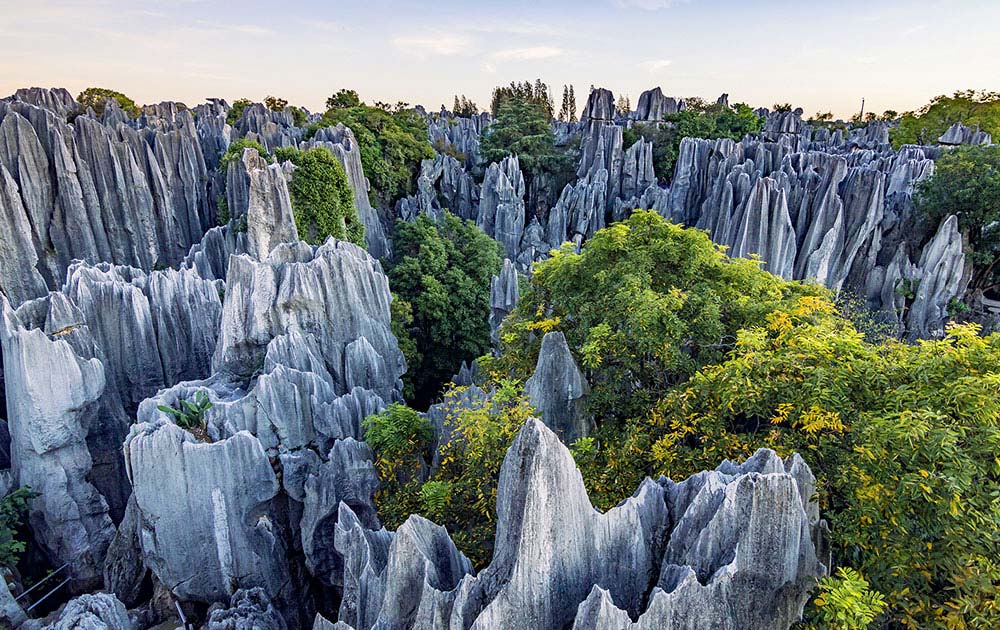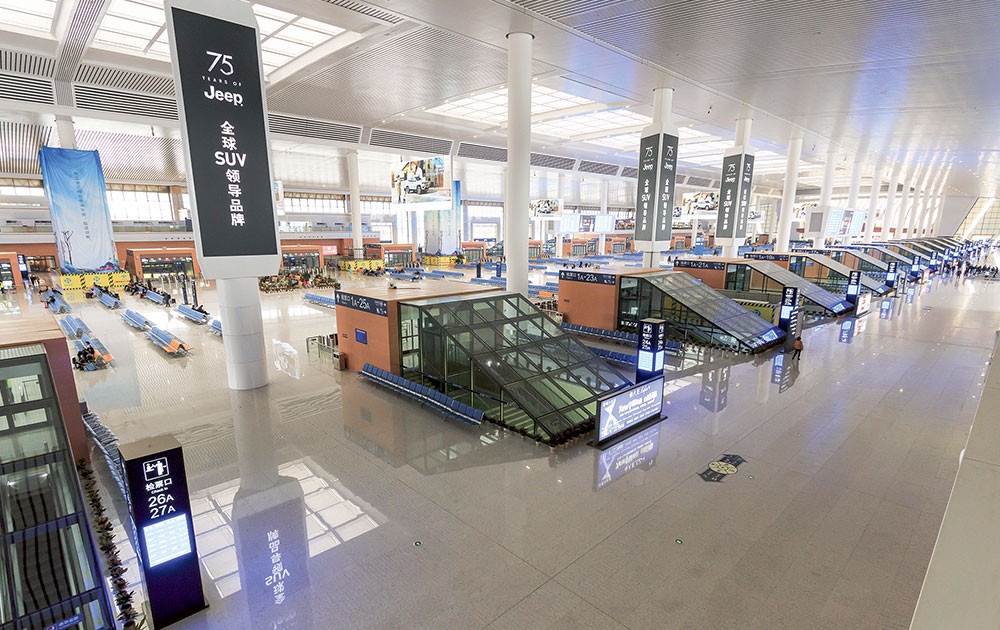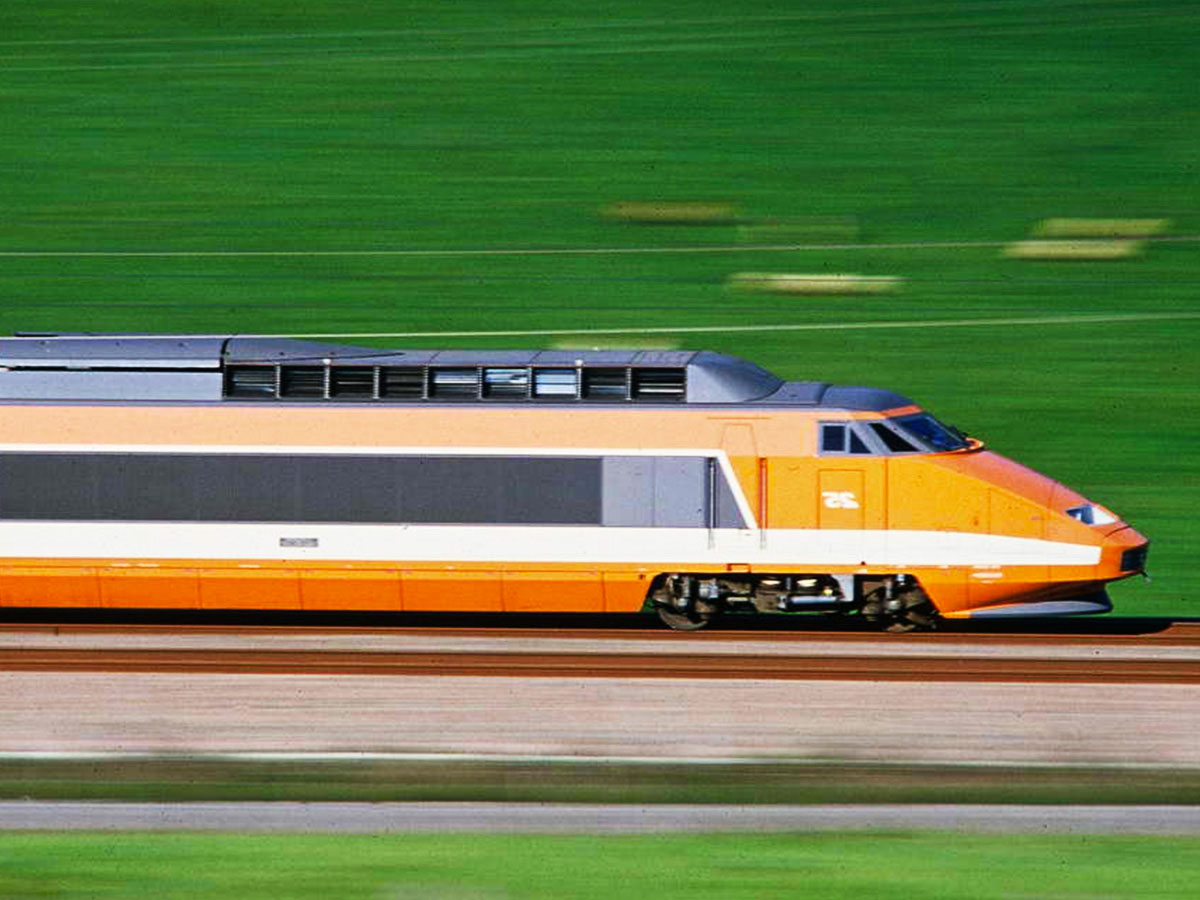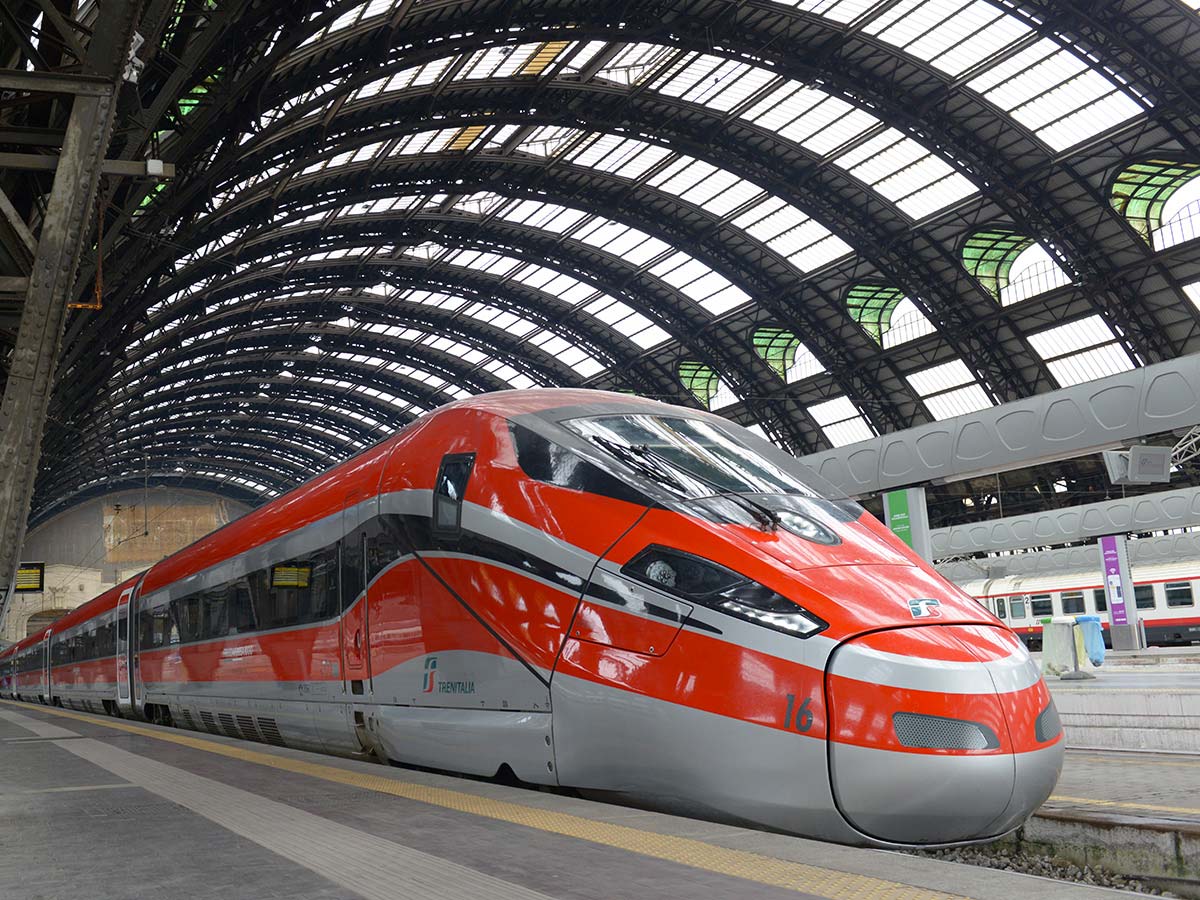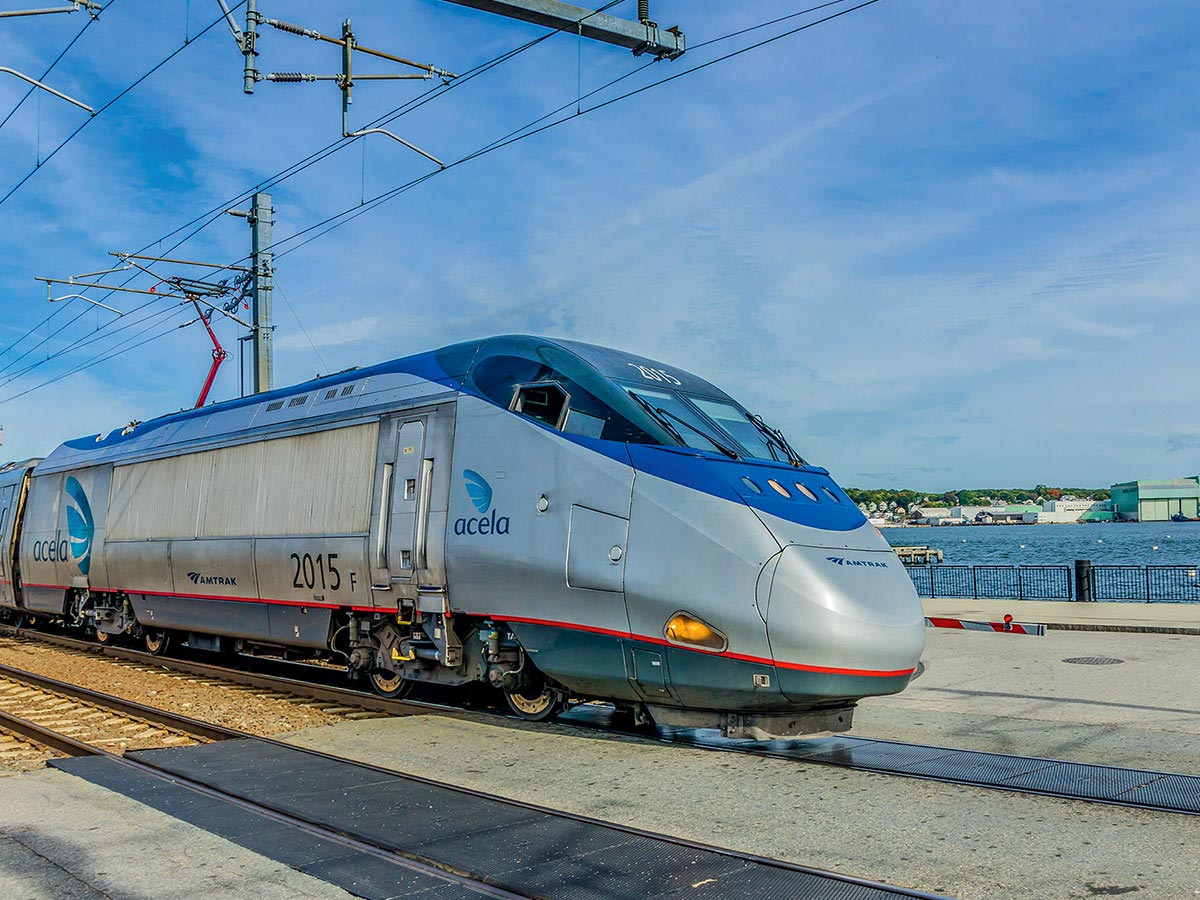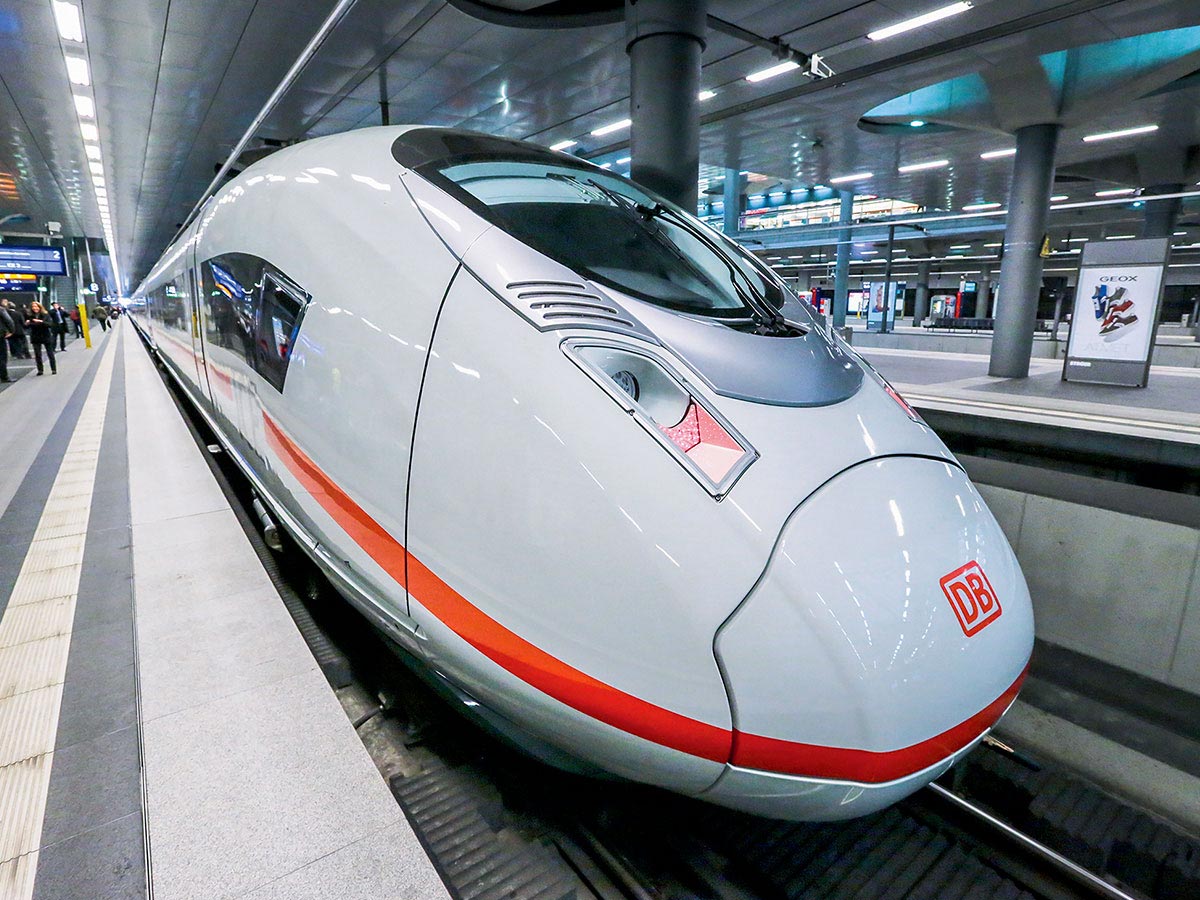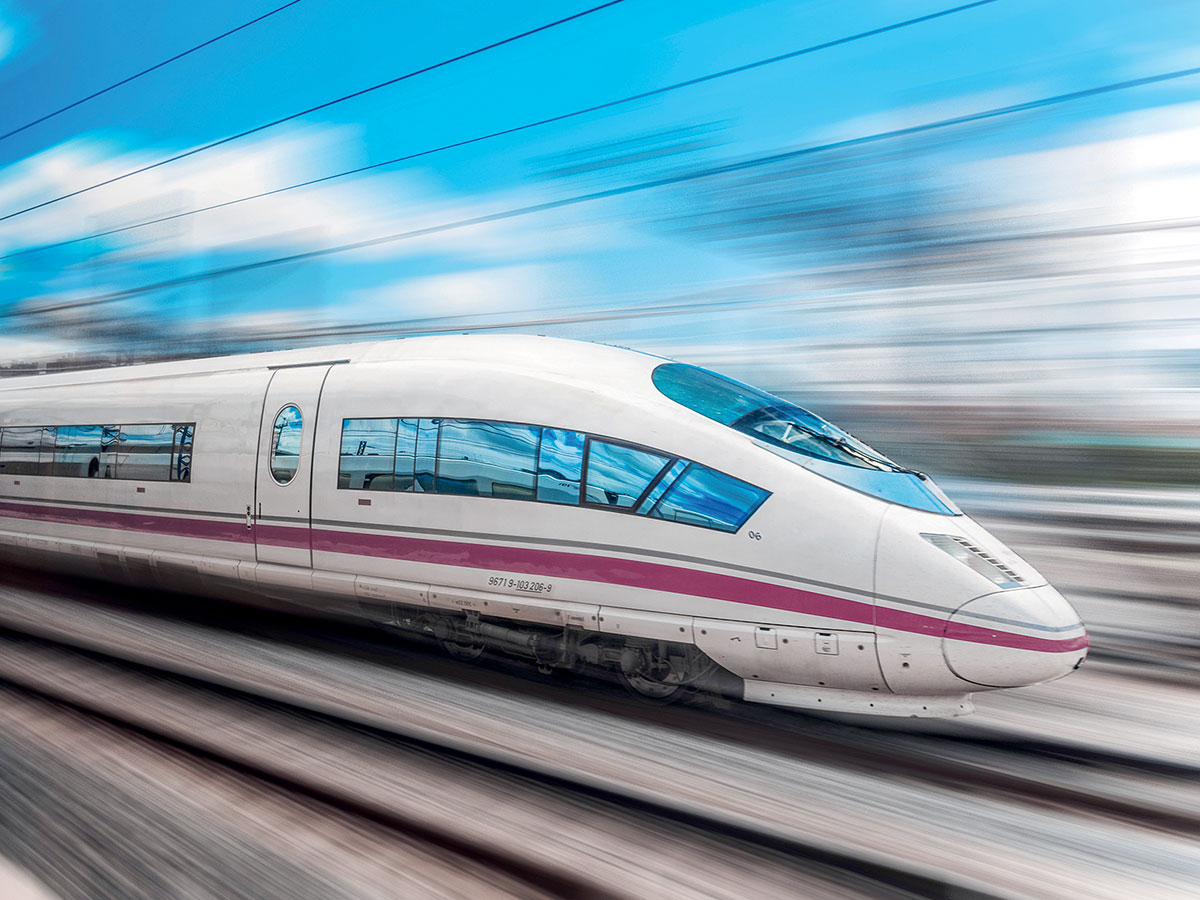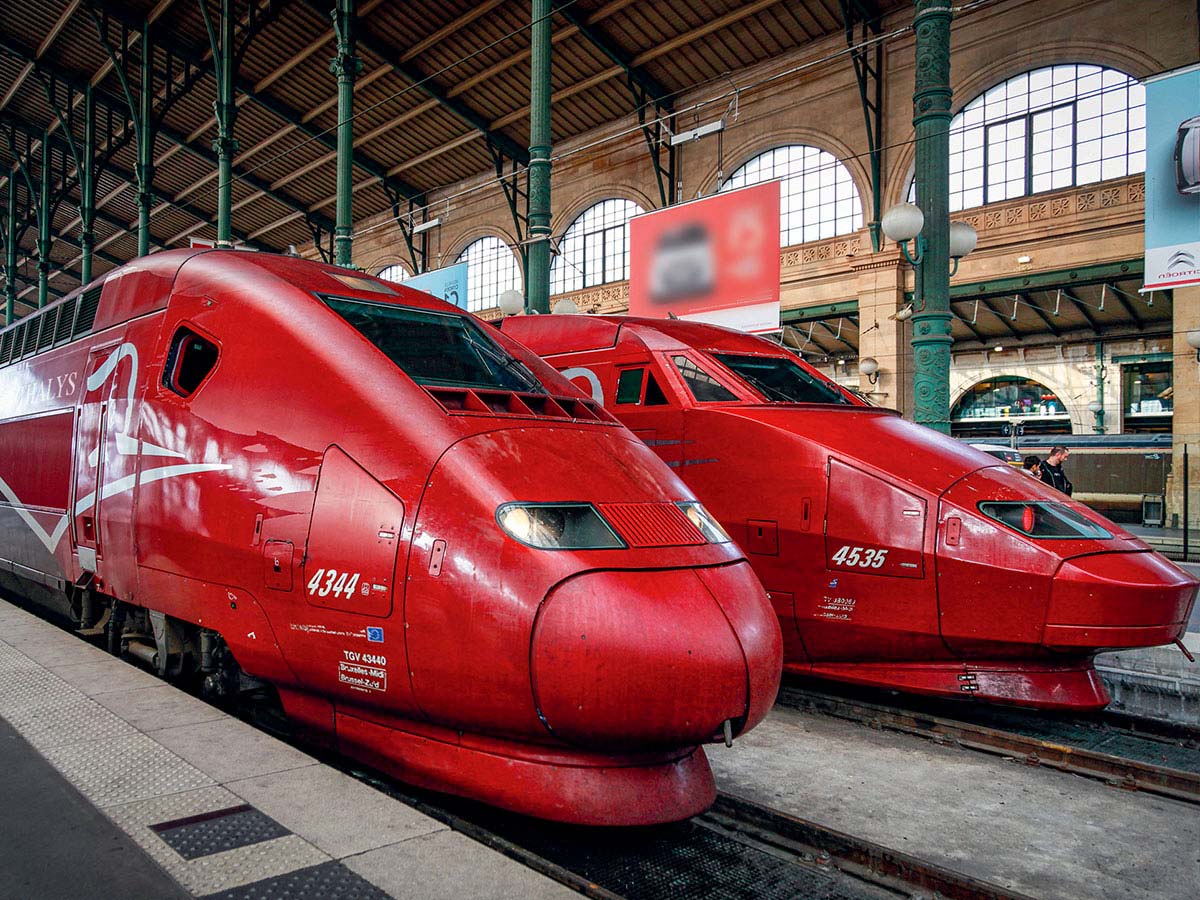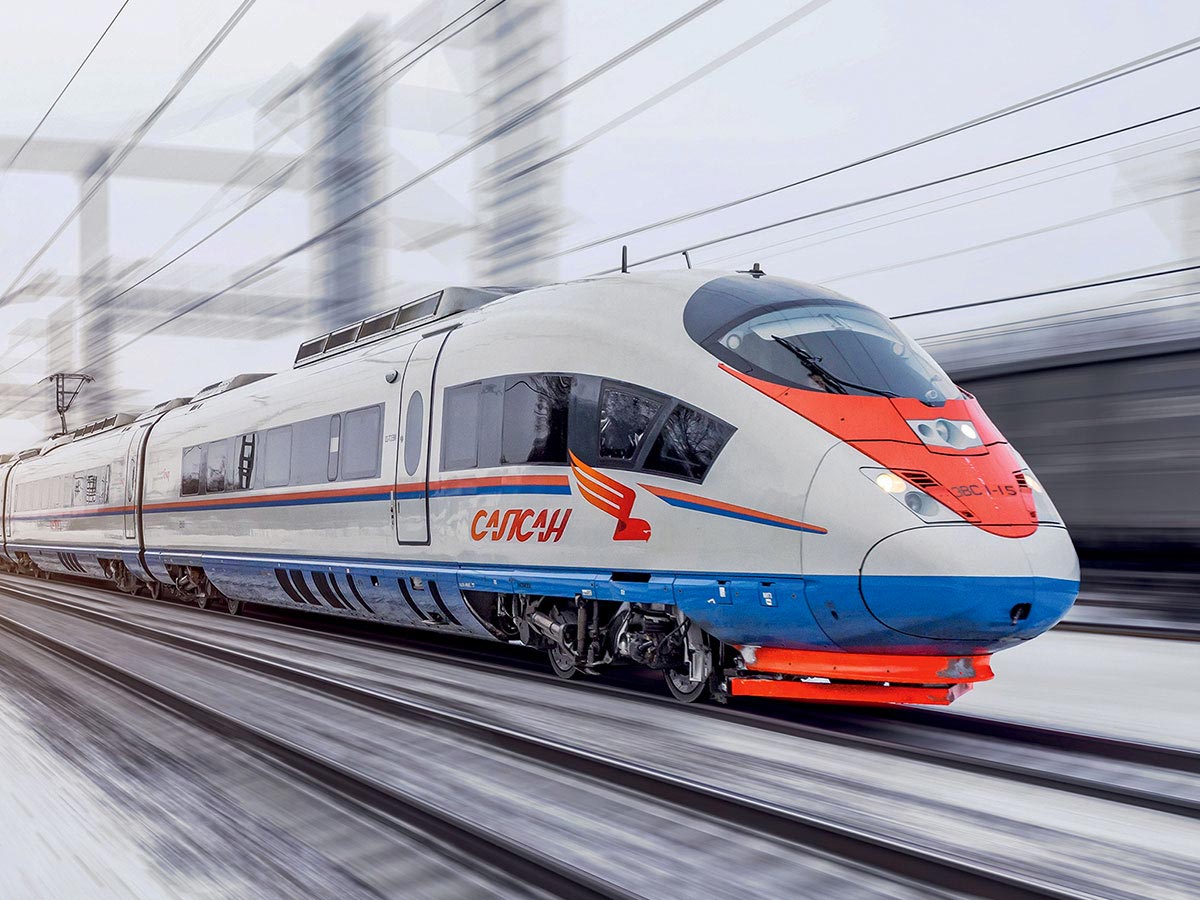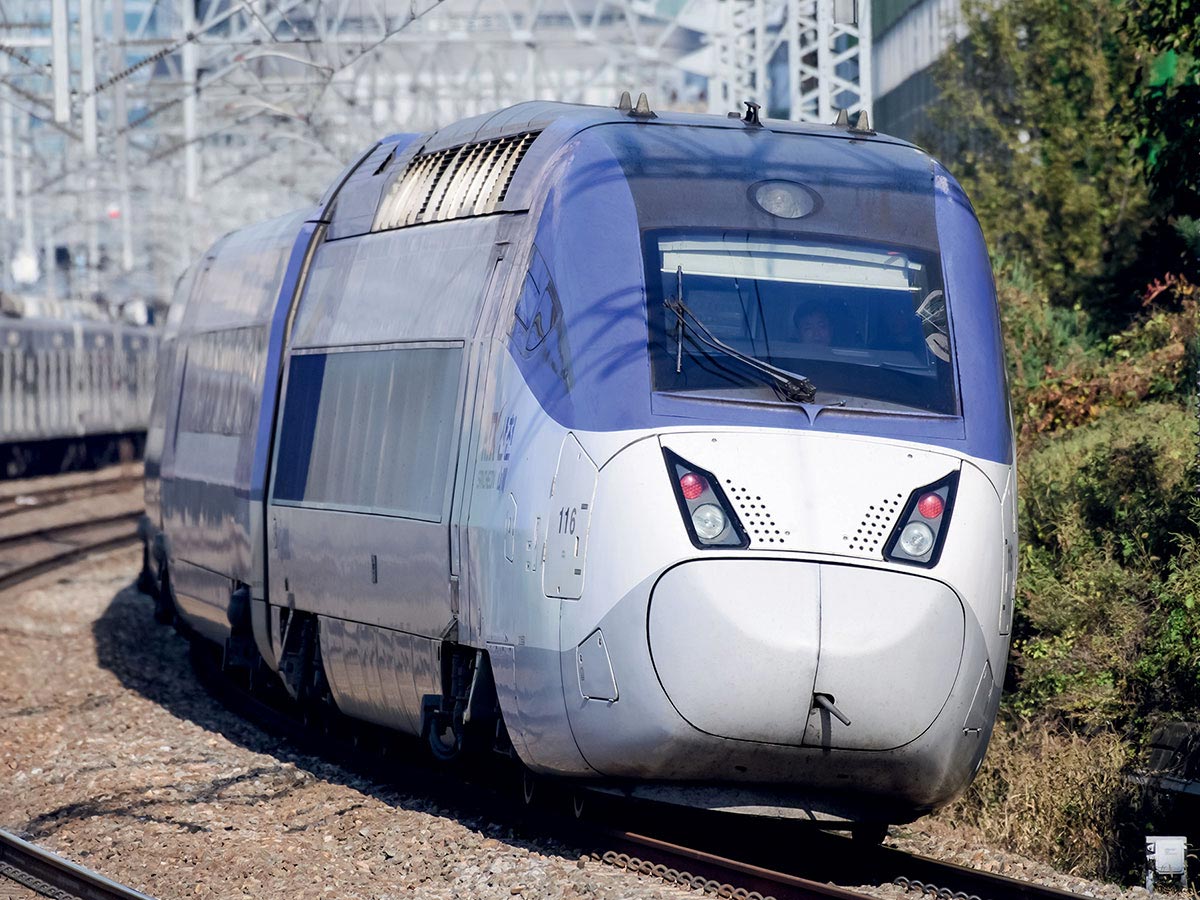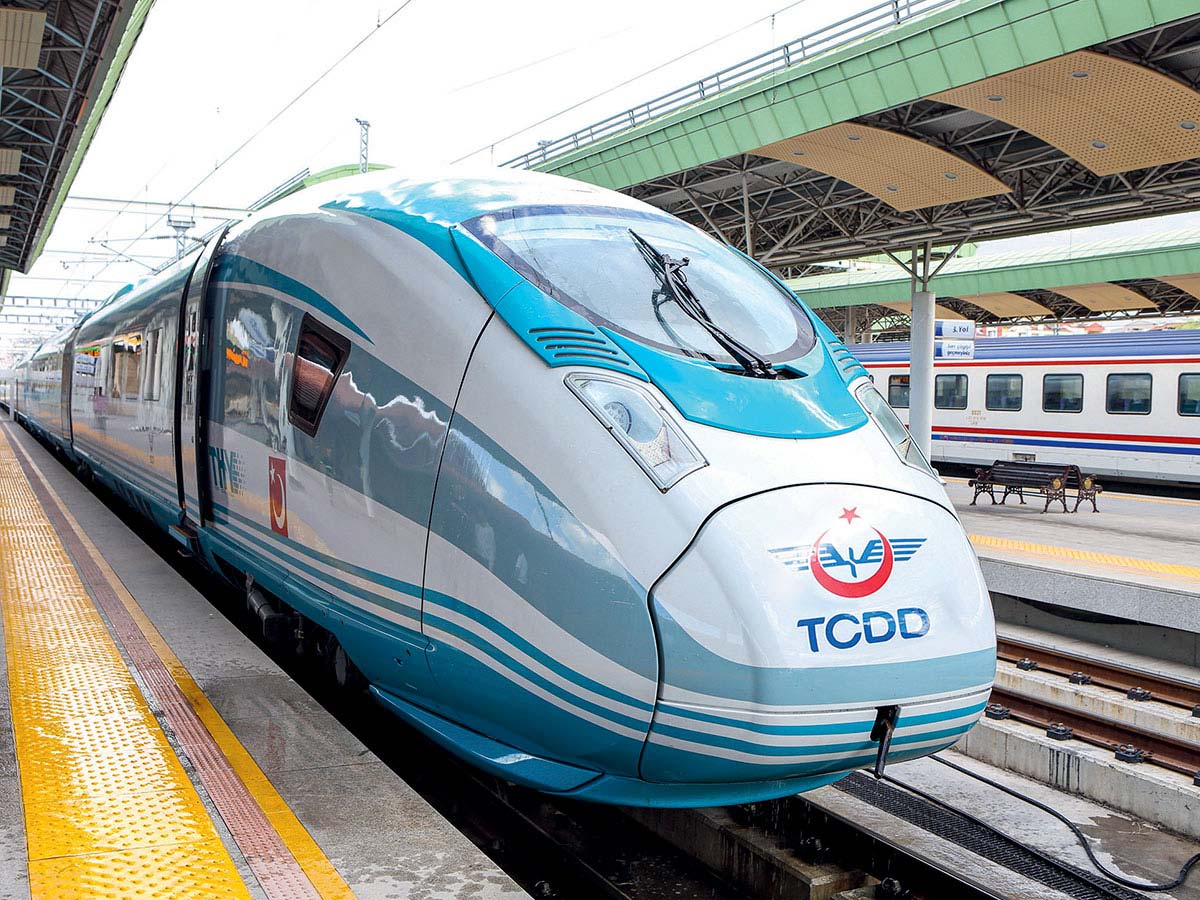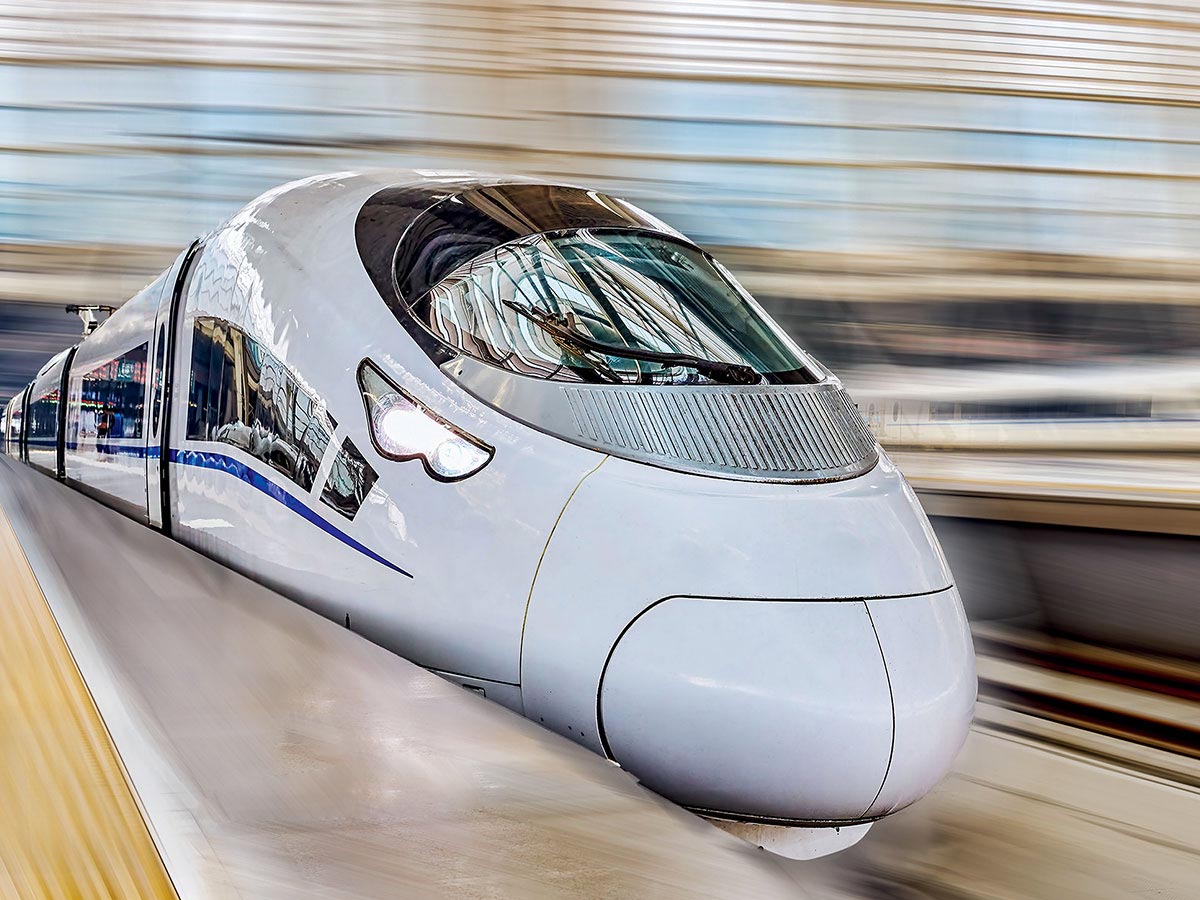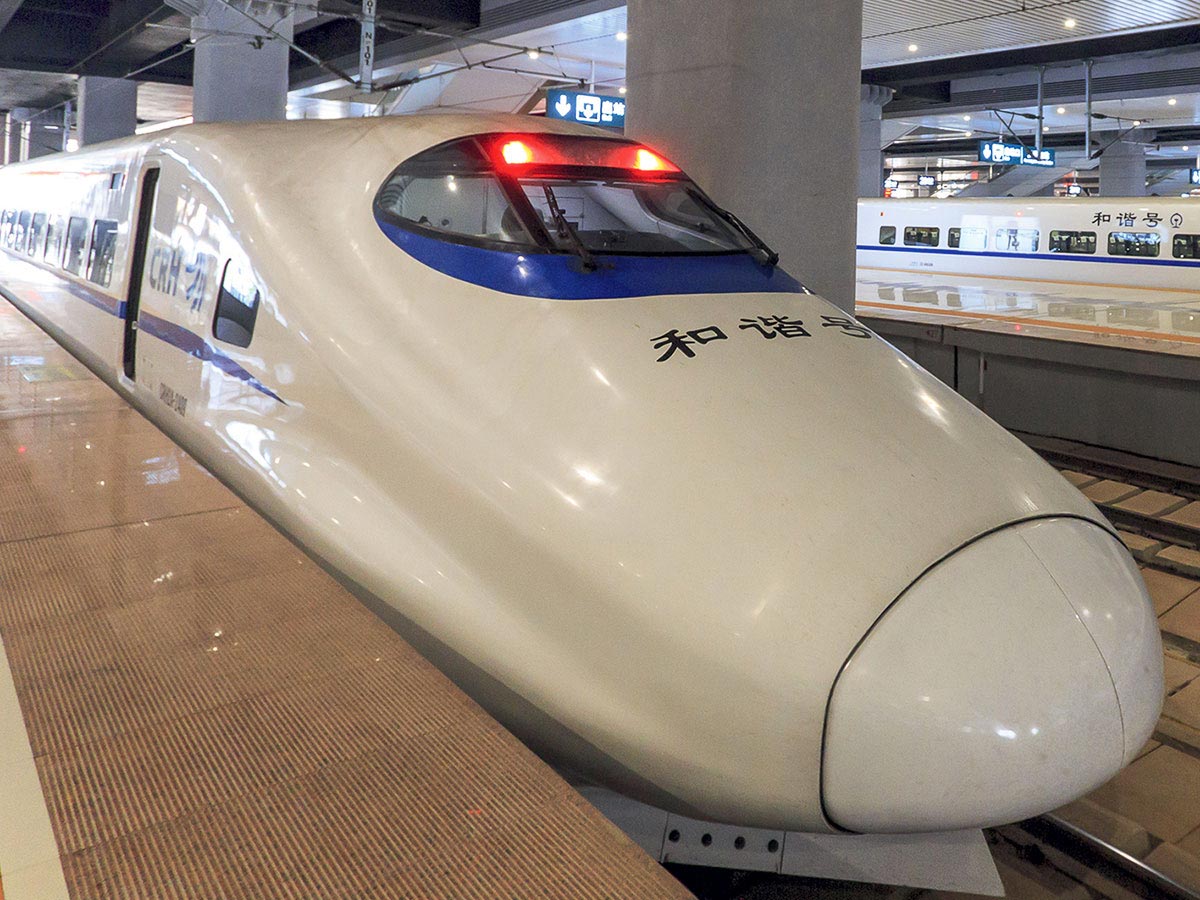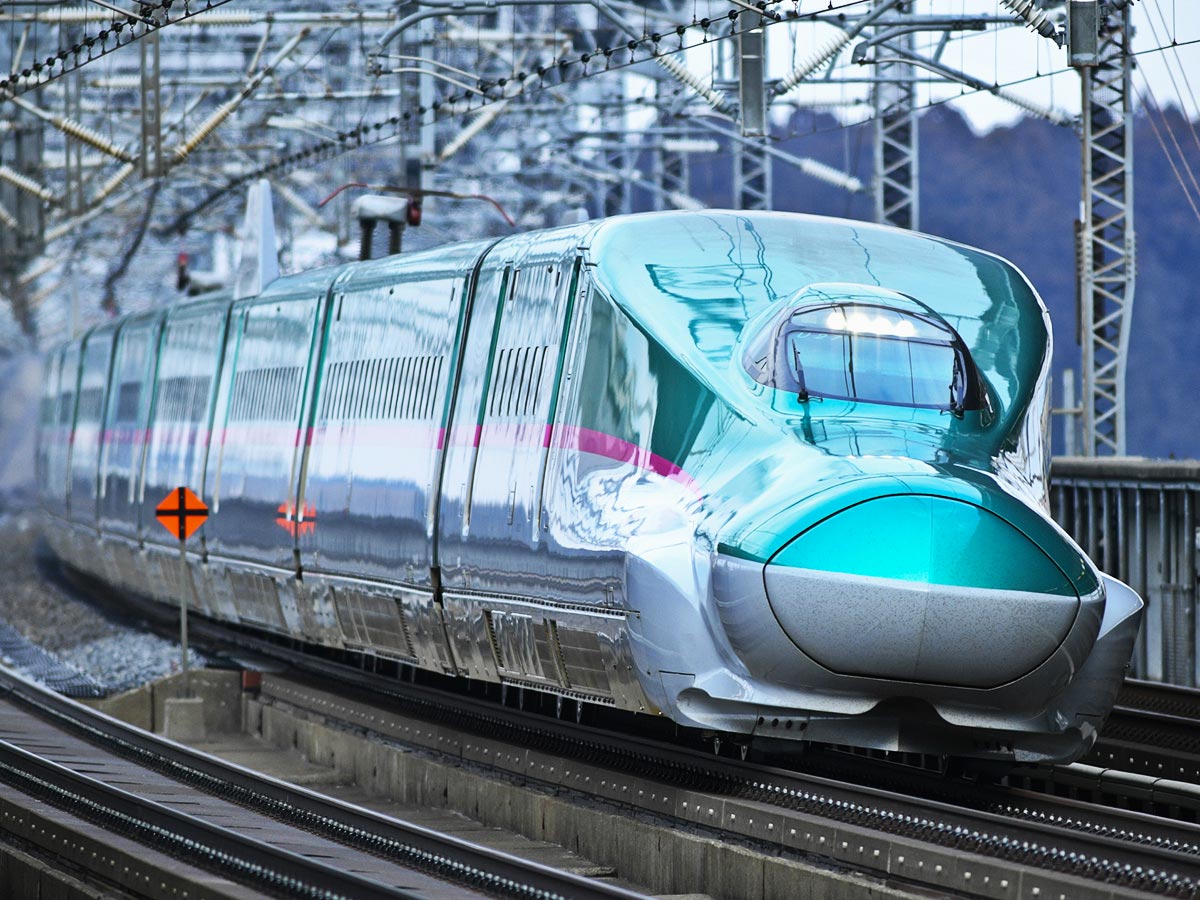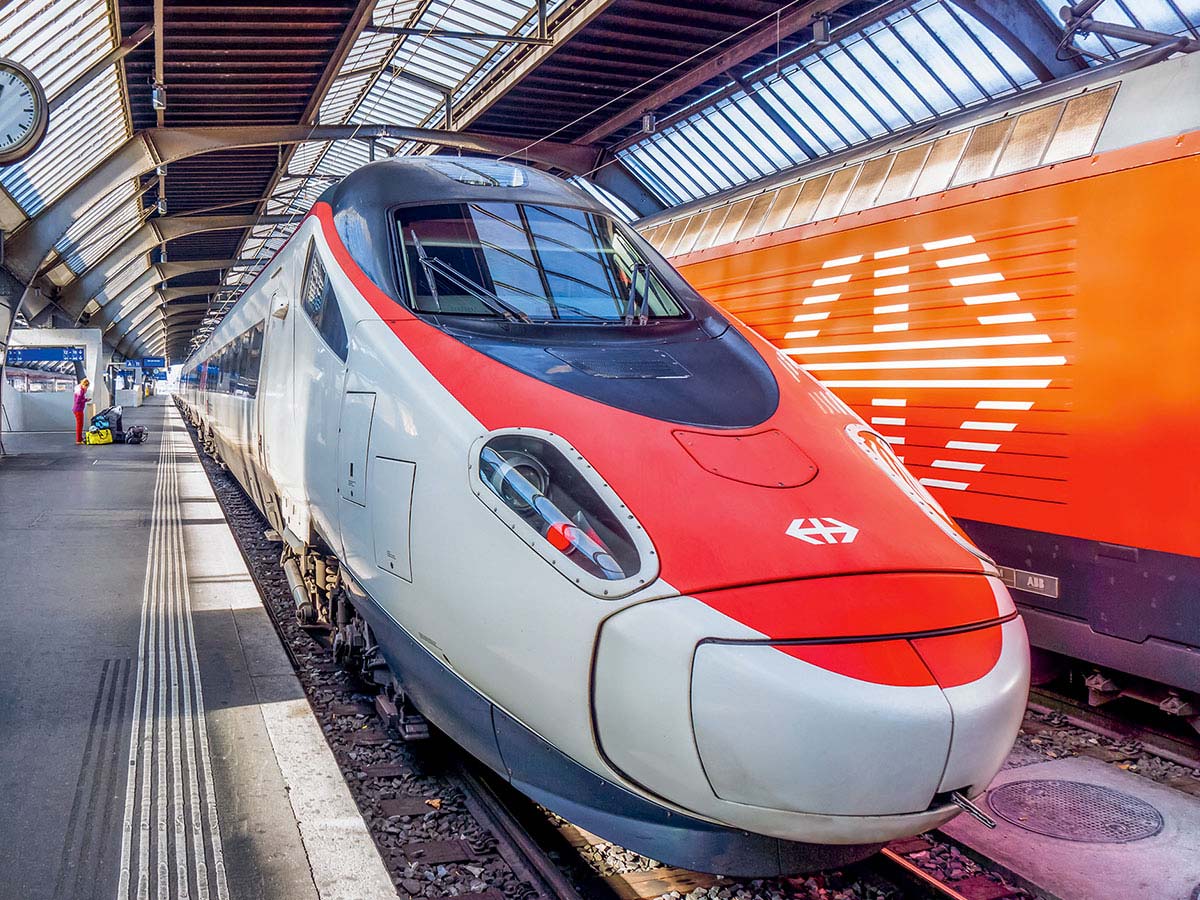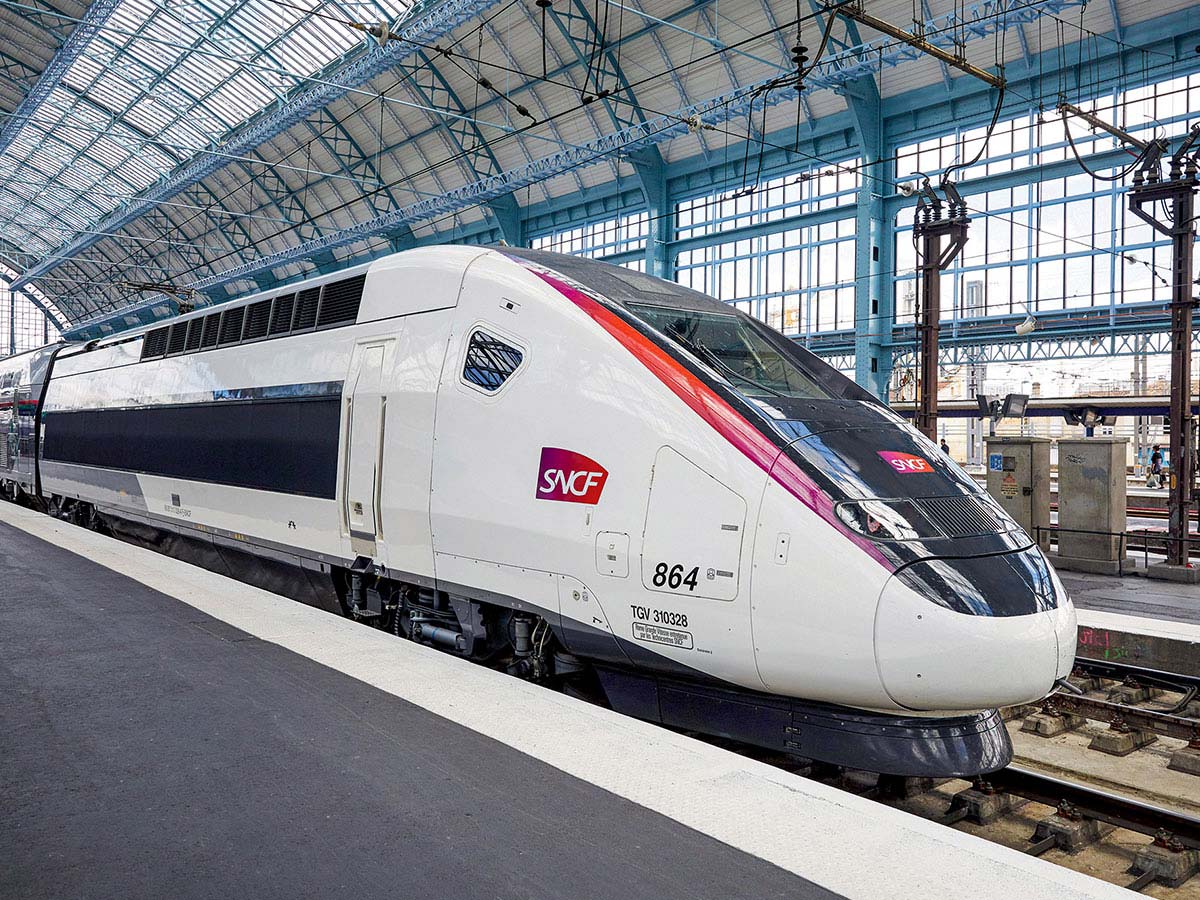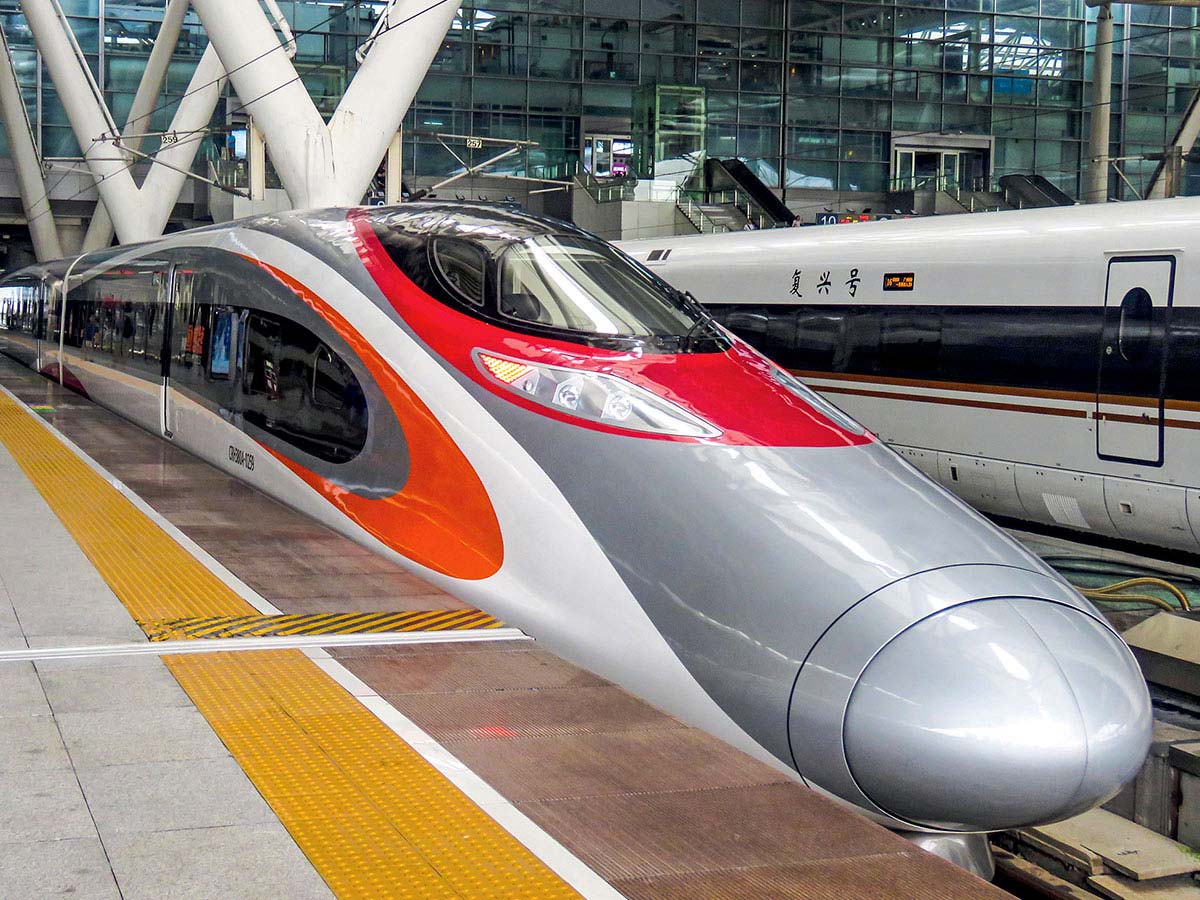SHANGHAI > KUNMING

2016 | CHINA
Journey

More Info
- Length in km: 2,260 km
- Name of the train: FUXING HAO
Known for the diversity and sheer beauty of the landscapes and villages along its route, the Shanghai-Kunming high-speed line spreads over 2260 km from east to west. From the Yangtze River Delta to the Yunnan and Guizhou plateaus, the line crosses 6 provinces, vast rolling tablelands and great lakes before entering the landscape of tall mountains. Connecting the megalopolis of Shanghai to the millennial city of Kunming by a twelve-hour journey, this high-speed line was completed in 2016, and now facilitates economic exchange between the eastern, central and western regions of China. Serving certain elevated regions, in particular those of Mounts Wuling and Liupan, the line brings previously isolated areas closer to cities.
Leaving Shanghai
The largest metropolis in China is also the most modern, and has become an icon of Chinese dynamism. Shanghai, whose name translates as “Upon-the-Sea”, borders the East China Sea, and is the world’s largest container port as well as the financial centre of Asia. It is also the city of science, technologies, trade, and information. Shanghai is spectacular: Pudong, on the riverbank facing the Bund, is home to nearly a quarter of the tallest skyscrapers in the world. Given the vast scale of air-conditioned shopping malls, the pace of consumer-society may seem frenetic, yet Shanghai retains much of its traditional culture. Leading in the fields of fashion and design in China, the city is avant-garde in terms of cultural events, brimming with opera houses, theatres, museums and music venues.
Among the most emblematic sites of Shanghai are the Yuyuan Garden, considered to be one of the most celebrated gardens of the 16th century, and the ancient Jing’an Temple, surrounded by skyscrapers that watch peacefully over the city. The journey from Shanghai to Kunming begins at the Shanghai-Hongqiao station in the Minhang district. It is one of the most significant passenger terminals in China.
A line of over 2,000 kilometres built in six years
Shanghai-Hangzhou is the first section of the high-speed line connecting Shanghai in the east to Kunming in the west, and it began operating in 2010, while the second section, between Hangzhou and Changsha, began in 2014. The last leg - from Changsha to Kunming – was completed in three successive segments between 2015 and 2016. The 2,260 kilometres of the line has shortened travel time between Shanghai and Kunming from 34 hrs to 12 hrs. Commercial speed is 300 km/hr, with a maximum peak speed of 350 km/hr.
Shanghai-Kunming, the journey
After leaving Shanghai, the train passes the Zhejiang province city of Jiaxing, considered “a land of abundance” thanks to its rice and tea plantations. South Lake, set in a luxurious green park, is one of the city’s main attractions, and nearby are the charming coastal towns of Wuzhen and Xitang, each built around a series of canals. The train stops at Hangzhou, capital city of the region. Often called “paradise on earth”, the city was once one of the seven ancient capitals of China. The historic city is built along the mythical West Lake, listed as a UNESCO World Heritage Site since 2011. Here travellers will discover ten legendary and idealised panoramic sites, such as “Autumn Moon Over the Peaceful Lake Pavilion” – where visitors can admire the full moon in autumn -, “Melting Snow on the Broken Bridge (Duan Qiao)”, and “Leifeng Pagoda Sunset”.
Also in Zhejiang is Jinhua, famous for being home to the world’s largest film studio, Hengdian World Studios, as well as for a variety of ham produced locally. The train then enters Jiangxi province. Here in springtime the landscape is dotted with yellow rapeseed fields, green tea plantations, and charming villages set against the backdrop of high peaks. In the provincial capital of Nanchang, Tengwang Pavilion is one of China’s most ancient structures. The train stops at Changsha, capital of Hunan province, whose renowned cuisine has evolved over the course of 3,000 years: smoked fish head with red pepper and tasty fried tofu are among the preferred recipes of Hunan. The train continues its way toward Guizhou province, home to many ethnic minorities. In the county of Taijiang, 93% of the population is Miao. Local specialties include a unique form of embroidery as well as magnificent silver jewellery. Guiyang, the capital city of Guizhou, enjoys a pleasant climate. In winter, visitors can bathe in the Xifeng hot springs. In summer, they can visit the natural pools and waterfalls of Tianhe Pond, as well as the Nanjiang caves and gorges, where beautiful cascades appear along the karstic cliff sides. Anshun is one of the most interesting destinations of Guizhou, an area known for its natural beauty. Forty kilometres to the south is the Huangguoshu Waterfall, and just 30 kilometres away is the tourist destination of Dragon Palace (Longgong). Visitors navigate the vast underground river by boat, passing through a series of grottoes. The train’s approach to the provincial capital of Kunming offers our first glimpses of the landscapes of Yunnan province.
Major engineering works
Taking into account the urban conurbations and steep topography of the route, the Shanghai-Kunming rail line required the construction of many tunnels and bridges. Located in Jinhua, Zhejiang province, the Jinhua Jiang Bridge (11.4 km) crosses the river of the same name. The bridge arches through the sky, deeply anchored beneath water level at each end. Technically, the bridge was quite difficult to erect, and in 2016-2017 it was selected to receive the China Construction Engineering Luban Prize, the highest Chinese distinction in the sector. The Beipanjiang Bridge stretches a total of 721.25 metres over the Beipan River, near Anshun, Guizhou province. Six years of construction were required to build the reinforced-concrete arched span, which is now traversed by high-speed trains in a mere 8 seconds.
The section of the line between Guiyang and Kunming proved to be a challenge for stakeholders, due to complex – and often unfavourable - geological conditions such as karstic zones, landslides, caves, and underground rivers. The Bibanpo Tunnel is an excellent example. At 14.756 km in length, it is the longest tunnel erected on any Chinese high-speed rail line. The tunnel’s two parallel tubes run in opposite directions. The presence of deep groundwater, faults, and alternating zones of soft and hard substrate forced engineers to resolve considerable technical problems, and to adopt a construction model for this high-speed rail line that is unique to China.
The line is protected by anti-noise walls in the most densely populated areas, and - when the train runs alongside roadways - anti-glare barriers to prevent train headlamps from blinding automobile drivers. Particular care was given to protect the environment, including tree and shrub planting, and to integrate local architectural aesthetics in the design of stations along the line.
Emergency situations
The Chinese rail system allows for quick response in the case of emergency situations, and for preparation of rescue operations. The system connects local authorities, armed forces, medical services, firemen, public safety officials and stakeholder companies, transmitting emergency communications in real time, including images and voice messages from the command centre to the site of the accident. At any given moment, railway services possess the technical, material, and human resources to enact rapid and well-coordinated solutions in the case of an emergency.
Skills for high-speed
The high-speed rail line network is well managed, thanks to staff that are well-trained in security. Training programmes dedicated to high-speed provide the foundation for employees, preparing them in the areas of advanced technologies, risk prevention and emergency response. High-speed rail training includes three separate levels of teaching and training.
Security first
China has implemented a very complete security management system on its high-speed rail lines. A law to regulate security management was introduced in 1990, and was the first of its kind. In 2015, this law was revised to specify security regulations in all areas of high-speed rail: construction, design, execution and maintenance. Engineering works such as bridges and tunnels are designed to last for 100 years. Ballastless tracks, drainage of subgrade, and slope protection all have an estimated life span of 60 years. The automatic management of trains is organised by the operational control system (CTCS). Protocols have been put in place to control train sets at different speeds.
Each morning, an inspection train examines the tracks in order to verify optimum infrastructure before the first passenger train departs. An in-depth-monitoring train - known as “Doctor Yellow” due its bright livery - is sent out every ten days to examine rail line installations. This train conducts an automatic control of the tracks, the signalisation and communication systems, pantographs, overhead lines, and bogies to rail liaisons. Track and installation maintenance operations are carried out at night, to avoid any interruption of traffic. In addition, Chinese rail transports have developed a natural catastrophe response service. Sensors installed next to the track are able to detect the slightest obstacle, and thus allow for the adoption of appropriate security measures in function of provided data.
→ High-speed trains at Nanchang West Station.
Arriving at Kunming
The end of the line is Kunming South Station, situated in the Chenggong district. This immense structure, housing 16 platforms and 30 tracks, is a veritable hub. The high-speed line is connected to the rail network, the metro system, bus lines and taxis. It is a key element of China’s “belt and road” policy, representing the future entranceway toward Southeast Asia. Kunming, known as the “city of eternal spring”, boasts a pleasant climate. Surrounded by mountains on three sides, the city is built along the banks of Dianchi Lake. One of China’s ten most popular destinations, the city offers a variety of tourist destinations. Among these are the green lake, wild apple trees covered with blossoms in spring, the Stone Forest at Shilin, the parks around Dianchi Lake, and temples built into the hollowed cliff faces of the mountains to the west of Kunming.
Not to be missed is the local specialty: a delicious rice noodle soup known in China as “Guoqiao mixian”.
a selection of HIGH-SPEED LINES by creation date
1964

TOKYO > OSAKA
1992

TURIN > NAPLES
1992

MADRID > SEVILLE
2002

COLOGNE > FRANKFURT
2008

BARCELONA > MADRID
2010

SEOUL > BUSAN
2011

BEIJING > SHANGHAI
2014

ANKARA > ISTANBUL
2014

LANZHOU > URUMQI
2016

SHANGHAI > KUNMING
2016

TOKYO > HAKODATE
2016


ZURICH > MILAN
2018

BEIJING > HONG KONG
2018

TANGIER > CASABLANCA
